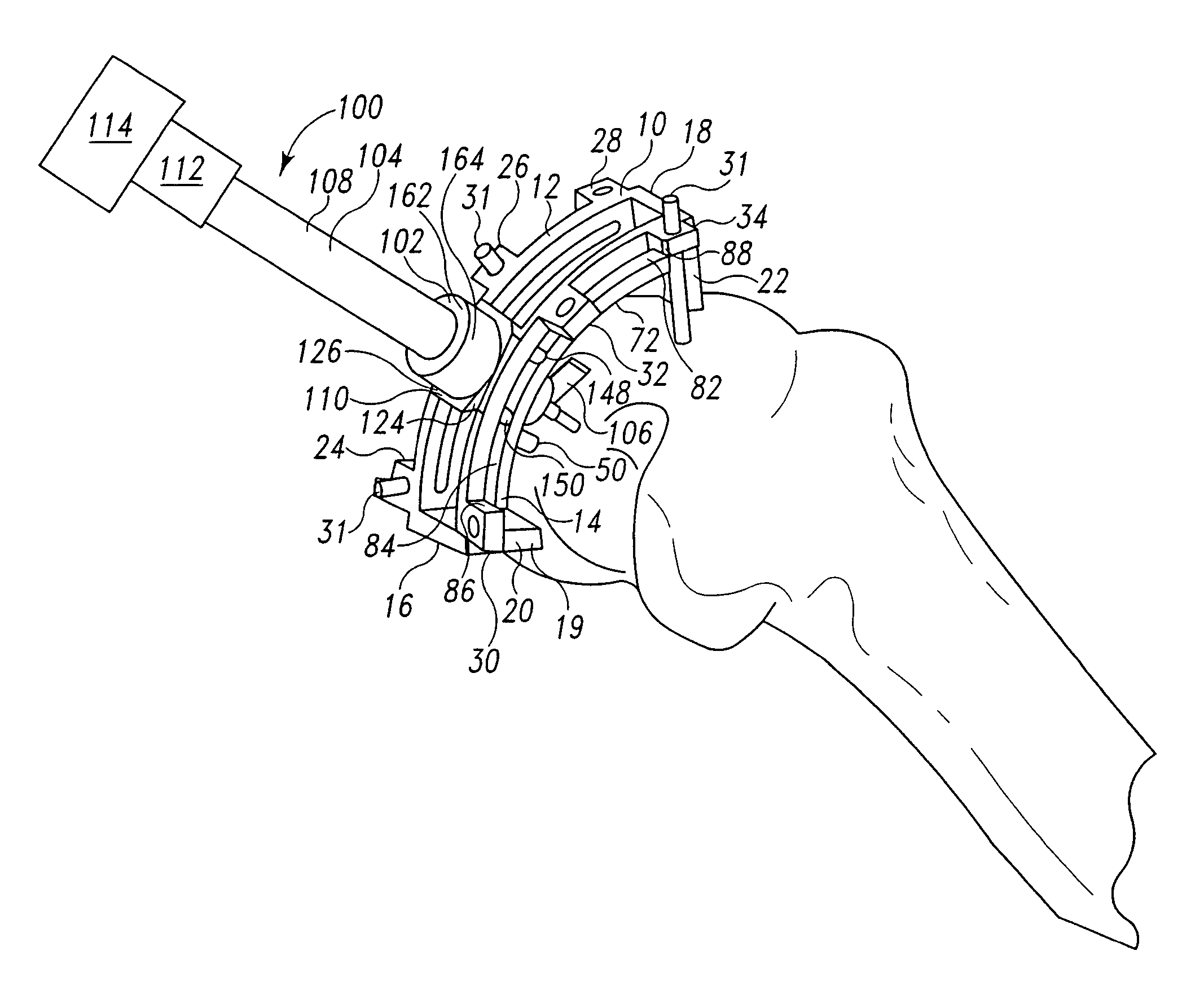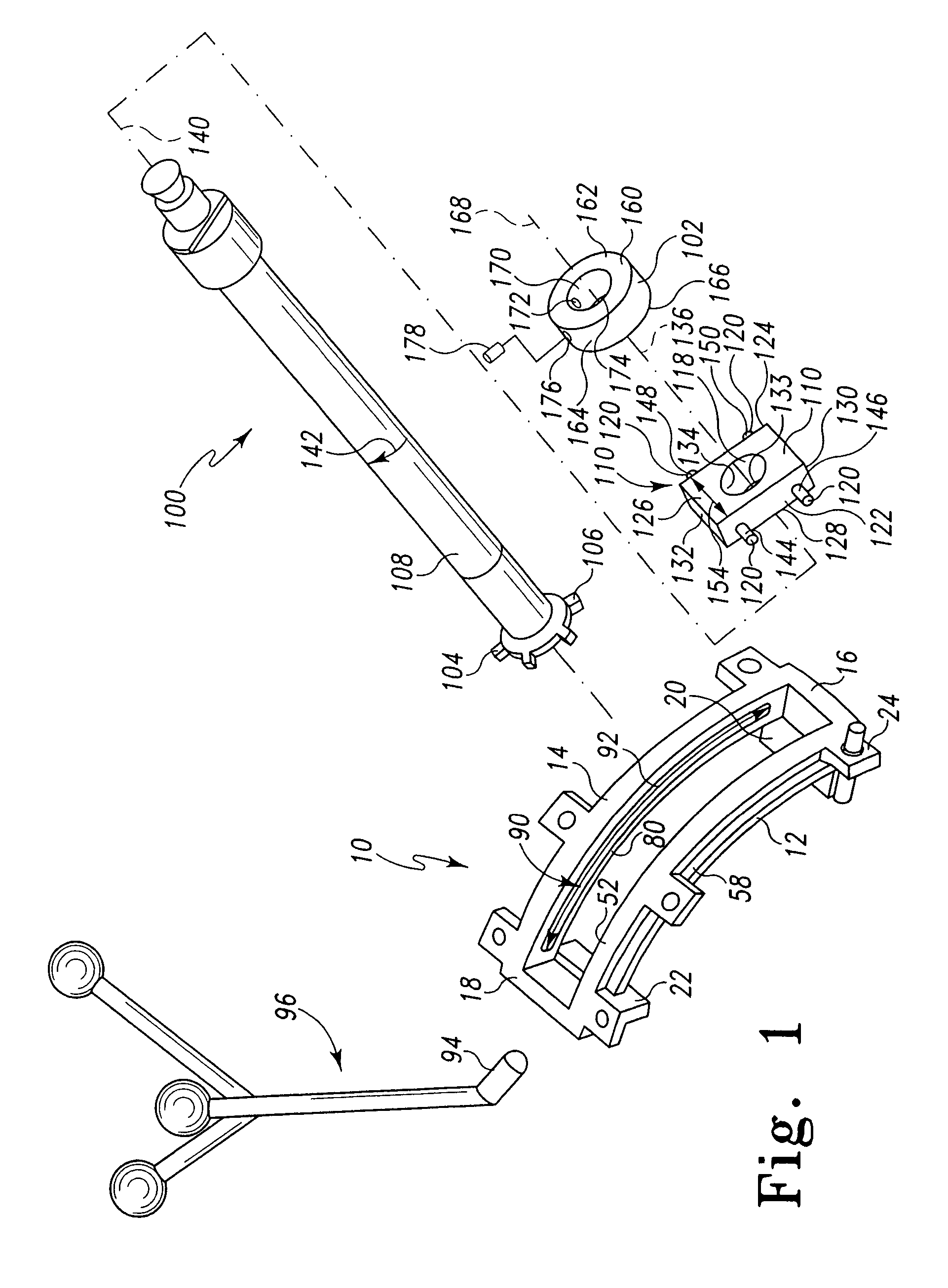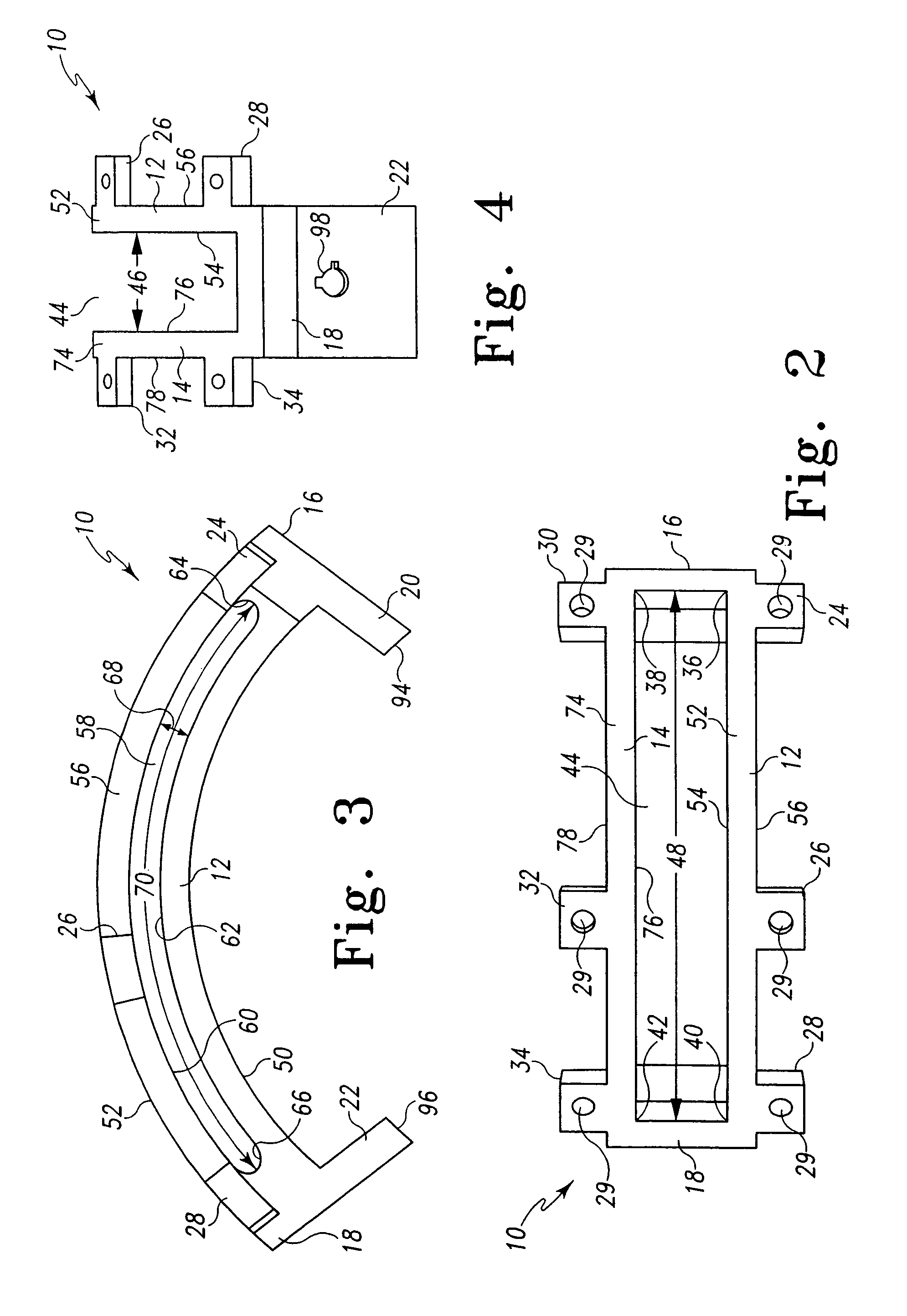Bone shaping instrument and method for using the same
a bone shaping and instrument technology, applied in the field of joint arthroplasty, can solve the problems of bulky instrumentation which requires more intrusive surgery, need for replacement prosthetic procedures, and difficulty in reproducing alignment, and achieves less invasive surgery, less incisions, and more kinematically correct implants
- Summary
- Abstract
- Description
- Claims
- Application Information
AI Technical Summary
Benefits of technology
Problems solved by technology
Method used
Image
Examples
first embodiment
[0039]As shown, for example, generally in FIGS. 1-11 and more particularly in FIGS. 1-4, the guide 10 includes a medial rail 12, a lateral rail 14, a posterior cross member 16, an anterior cross member 18, a posterior leg 19, an anterior leg 21, and a plurality of ears 24, 26, 28, 30, 32 and 34. The posterior cross member 16 extends between and couples the posterior end 36 of the medial rail 12 and the posterior end 38 of the lateral rail 14. The anterior cross member 18 extends between and couples the anterior end 40 of the medial rail 12 and the anterior end 42 of the lateral rail 14. The medial rail 12, lateral rail 14, posterior cross member 16 and anterior cross member 18 cooperate to define a tool-receiving slot 44 through which portions of the cutting tools 100, 200 and / or drive shafts 112 of the power source 114 extend to drive the cutting tools 100, 200.
[0040]In the illustrated embodiment, the medial rail 12 and the lateral rail 14 extend longitudinally parallel to one anot...
second embodiment
[0060]As shown, for example, in FIGS. 5-7, a guided cutting tool 200 includes a posterior cutter 202, an anterior cutter 204, a posterior return spring 206, an anterior return spring 208, a driver 210, a plurality of pairs of shims 212 and a plurality of guide pins 214. The plurality of pairs of shims 212 are provided for placing under the anterior foot 22 and posterior foot 20 of the guide 10 for adjusting the effective length of the posterior leg 19 and the anterior leg 21 and, thus, the depth of the resection performed by the guided cutting tool 200. The plurality of pairs of shims 212 will be provided in pairs having incrementally differing thickness to facilitate incrementally increasing the depth of the resection by replacing the shims 212 after the posterior and anterior cutters 202, 204 cease removing bone from the femur.
[0061]The posterior cutter 202 includes a body 216 having a top wall 218, a cutting surface 220, a medial side wall 222, a lateral side wall 224, a posterio...
PUM
 Login to View More
Login to View More Abstract
Description
Claims
Application Information
 Login to View More
Login to View More - R&D
- Intellectual Property
- Life Sciences
- Materials
- Tech Scout
- Unparalleled Data Quality
- Higher Quality Content
- 60% Fewer Hallucinations
Browse by: Latest US Patents, China's latest patents, Technical Efficacy Thesaurus, Application Domain, Technology Topic, Popular Technical Reports.
© 2025 PatSnap. All rights reserved.Legal|Privacy policy|Modern Slavery Act Transparency Statement|Sitemap|About US| Contact US: help@patsnap.com



